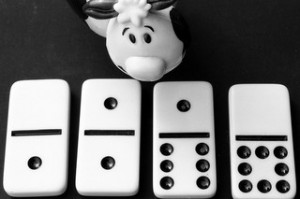 We make hundreds of decisions a day, some conscious, some unconscious. But do we really understand what each decision entails, and are there ways to improve our decision-making?
We make hundreds of decisions a day, some conscious, some unconscious. But do we really understand what each decision entails, and are there ways to improve our decision-making?
 We make hundreds of decisions a day, some conscious, some unconscious. But do we really understand what each decision entails, and are there ways to improve our decision-making?
We make hundreds of decisions a day, some conscious, some unconscious. But do we really understand what each decision entails, and are there ways to improve our decision-making?
The academics have defined dozens of models of decision-making, from the rational decision-making model to the ethical decision-making model to a nine step decision model proposed by David Welch.
None of these, however, feels complete. Each deals with specific types of decisions, and while quite valuable for those types of decisions, fails to address so many of the other decisions we make in life. No one, or at least no one I’m aware of, has defined an overarching framework that covers all decisions that are made.
What Is A Decision?
Merriam-Webster defines a decision as “a determination arrived at after consideration”.
Choosing who to hire is a decision, but so is reallocating your marketing budget, selecting tomatoes at the supermarket and setting the allowance for your child.
While most decision research focuses on choosing an optimal choice among a set of alternatives, a decision is any determination arrived at after consideration.
A Decision Framework
At the highest level, all decisions have four phases:
- Preparation
All the steps leading up to the actual decision including identifying the problem, determining goals, gathering information and analyzing data. - Decision
The specific process of creating a determination. - Implementation
The actions taken as a direct result of the decision. - Consequences
The effects caused by making the decision. Outcomes are milestone consequences often used to evaluate the effectiveness of a decision.
Note that while a decision can be made and not implemented, the failure to act can still be considered a type of implementation, since taking no action still has consequences. In fact, in many decisions, not taking action is one of the options under consideration.
The Framework In Action
Let’s look at the decision to buy a camera online.
In the preparation phase, you read product reviews, shop around for pricing, build a spreadsheet containing the specs of dozens of cameras, then finally rank each camera based on your preferences. Now you have a prioritized list of which cameras suit you best and detailed knowledge of each camera.
In the decision phase, you choose one camera to purchase. Your decision may be to choose the highest ranked camera from your analysis; or you may decide to flip a coin to choose between the top two cameras. Or you may delegate the decision to your spouse. The important thing here is that the preparation for the decision is separate from the decision itself.
In the implementation phase, you buy the camera. This may entail additional decisions, such as which store to purchase from and whether to purchase an extended warranty. I’m still working out how to integrate these follow-on decisions into the decision model, since they can play a key role in evaluating the outcome of a decision.
Finally, in the consequences phase, the camera is shipped from the store and you receive it at your house. You unpack the camera and start taking pictures. At some point you may decide to look back at the consequences of your decision and determine its outcome. At which point, you review your original reasons for purchasing the camera and determine whether the camera satisfied those reasons. You then decide whether you had a successful or failed outcome from your decision.
Using the Framework
Once we start separating decisions into these four phases, we can start analyzing each phase separately.
For instance, what are the types of decisions that can be made? Are there certain preparation steps which are better suited to certain types of decisions? Can we start correlating preparations and decisions to outcomes to improve our decision-making?
In our camera example, we chose a single option from a set of choices. Consider a different type of decision: allocation. Allocation decisions involve distributing a fixed amount of resources across multiple options.
Let’s say instead of buying a personal camera, I’m buying 30 cameras for the photography department of a college. I want multiple cameras of the same type, but I don’t want them all to be the same. My question has changed from which camera to purchase to how many cameras of each type to purchase.
Yet in this example, my preparation might be exactly the same. I read my product reviews, develop my spreadsheet with each camera’s specifications and finally rank each camera. However, my decision now involves determining the quantity of each camera to purchase. Afterwards, I might still go through the same implementation process, ordering my cameras online. But the consequences, and how I evaluate the final outcome, will likely be different.
Understanding which type of decision is being made can help me decide what types of preparations are best suited for that decision, how to track the consequences of that decision, and how to correlate that back to the preparation and decision processes to improve future decision-making. For example, the methods for tracking and correlating successful single option decisions differ greatly from the methods used for allocation decisions.
How do your decisions fit into this framework?
Credits: The photo used in this article was taken by Stuart Heath.







